What can you take for hernia pain. Living with a Hernia: Ways to Relieve Hernia Pain
What can you take for hernia pain. Ways to relieve hernia pain temporarily before treatment. Tips to relieve hernia pain.
Understanding Hernia Pain: Causes and Symptoms
A hernia occurs when an internal organ or tissue protrudes through a weak spot in the surrounding muscle or connective tissue. The most common types of hernias are inguinal (in the groin), femoral (in the upper thigh), umbilical (around the belly button), and incisional (at the site of a previous surgery). Depending on the type and severity of the hernia, the symptoms can vary significantly.
The primary symptom of a hernia is usually a bulge or lump that can be felt or seen, especially when straining, coughing, or lifting heavy objects. This bulge is the protruding organ or tissue, and it may be accompanied by a dull ache, burning sensation, or sharp pain. The pain can range from mild discomfort to severe, debilitating discomfort, depending on the size and location of the hernia.

Temporary Pain Relief Strategies
While a hernia cannot heal on its own and will require surgery for definitive treatment, there are some temporary measures you can take to help relieve the pain and discomfort:
Avoid Strenuous Activities
Engaging in heavy lifting, intense exercise, or other strenuous activities can exacerbate hernia pain by increasing the pressure and strain on the affected area. Instead, stick to light, low-impact exercises like walking or swimming, and be mindful of your body’s limits.
Maintain a Healthy Weight
Excess weight can put additional strain on the weakened area, leading to increased hernia pain. Losing a few pounds through a balanced diet and regular exercise may help alleviate symptoms and reduce the risk of complications.
Adjust Your Diet
For individuals with hiatal hernias, where part of the stomach protrudes through the diaphragm, avoiding acidic and spicy foods, as well as those associated with heartburn and indigestion, can provide relief. Eating smaller, more frequent meals and avoiding constipation-causing foods may also help.

Use Ice Packs
Applying an ice pack to the affected area can help reduce pain and inflammation associated with a hernia. This can provide temporary relief until you can seek medical treatment.
Take Over-the-Counter Medications
If recommended by your doctor, over-the-counter pain relievers like acetaminophen or ibuprofen may help alleviate mild hernia-related discomfort. However, these are not a substitute for proper medical treatment.
The Importance of Seeking Medical Attention
While the temporary relief strategies mentioned above can provide some comfort, it’s crucial to seek medical attention if you suspect you have a hernia. Ignoring a hernia can lead to serious complications, such as bowel obstruction or intestinal strangulation, which can be life-threatening. A healthcare professional can accurately diagnose your condition and recommend the appropriate treatment, which is typically surgical repair.
Selecting an Experienced Hernia Surgeon
When it comes to hernia repair, it’s important to choose a surgeon who specializes in this type of procedure and has a track record of successful outcomes. Experienced hernia surgeons, like those at the Hernia Center of Northeast Georgia Medical Center, are highly skilled in open, laparoscopic, and robotic hernia repair techniques, which can help reduce the risk of recurrence and other complications.
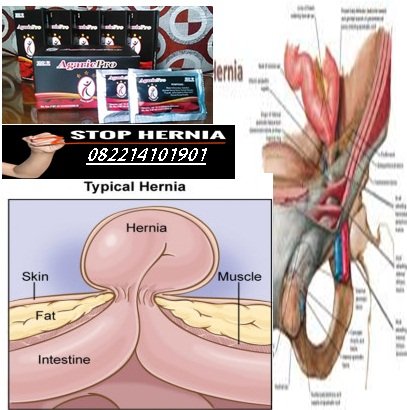
The Hernia Center of Northeast Georgia Medical Center
The Hernia Center of Northeast Georgia Medical Center (NGMC) is home to a team of highly skilled and experienced hernia surgeons. Each of our surgeons performs between 15 to 30 hernia surgeries per month, ensuring they have the expertise and technical proficiency to provide the highest quality of care possible.
Our surgeons have been recognized by the Surgical Review Corporation for their quality outcomes and expertise in hernia repair. By choosing the Hernia Center of NGMC, you can be confident that you’ll receive the best possible care and treatment for your hernia.
Don’t Delay Treatment
If you believe you may have a hernia, it’s important not to delay seeking medical attention. While the temporary relief strategies mentioned earlier can provide some comfort, the only way to effectively repair a hernia is through surgery. The sooner you address the issue, the lower the risk of complications and the quicker your recovery can be.
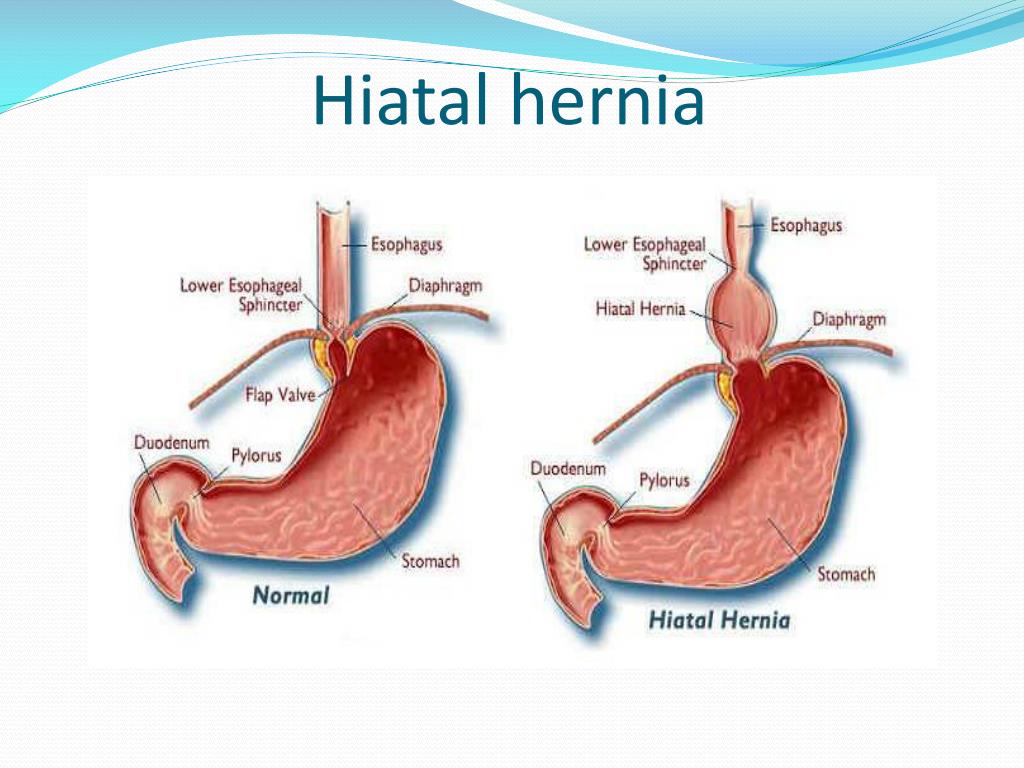
Contact the Hernia Center of NGMC today at 770-219-4040 to schedule an appointment and take the first step towards resolving your hernia and regaining your quality of life.
Living with a Hernia: Ways to Relieve Hernia Pain
Do you have a nagging ache in your belly or groin that you think maybe a hernia? Don’t ignore it. While it may be causing only slight discomfort now, hernias do not go away on their own. That’s why it’s important to seek medical attention right away if you think you may have a hernia.
While a hernia cannot heal itself, it can almost always be treated effectively with surgery.
The good news is that most hernias can be repaired with minimally invasive surgery – which has a low complication rate – and most patients are able to get back to their normal routine quickly. If left untreated, however, a hernia can cause serious complications such as a bowel obstruction (resulting in severe pain, nausea or constipation) or intestinal strangulation (if the trapped section of the intestines does not get enough blood).
Tips to relieve hernia pain temporarily before treatment:
Depending on the severity and type of hernia you have, there are some at-home treatment measures you can take to help relieve hernia pain until you can be treated by an experienced hernia surgeon. Here are some tips we recommend:
Here are some tips we recommend:
- Avoid lifting heavy objects and other strenuous exercises or activities. These activities may result in increased pressure and strain that could worsen your hernia. Stick to light and low-impact exercises like walking or swimming. Remember to listen to your body; if an exercise or activity is causing discomfort, avoid it until you can seek treatment.
- Maintain a healthy weight. Extra weight can exacerbate hernia pain. If you are overweight and dealing with a hernia, shedding a few extra pounds may help you improve your symptoms and avoid certain complications such as strangulation.
- Modify your diet. Diet can play a big role in controlling hernia symptoms. This is especially true for those with Hiatal hernias, where part of the stomach bulges upward through an opening in the diaphragm. Avoiding foods high in acidity as well as others associated with heartburn and indigestion can also help.
 Additionally, eating smaller meals and avoiding foods that may cause constipation can also provide hernia relief.
Additionally, eating smaller meals and avoiding foods that may cause constipation can also provide hernia relief.
- Use an ice pack. If you have a hernia in the abdomen or groin, applying an ice pack to the affected area can help reduce pain and inflammation.
- Over-the-counter medications may relieve symptoms. If advised by your doctor, over-the-counter medications like Tylenol and ibuprofen may be used temporarily to relieve mild pain and discomfort caused by a hernia.
It’s important to note that some hernias will require immediate surgery and should not be delayed. Your physician will be able to help determine the best treatment plan for your specific case.
You may be able to delay surgery, but the only way to effectively repair a hernia is through surgery.
Although the tips above may provide non-surgical relief from hernia symptoms, these measures are not intended to replace the need for surgery. Fortunately, hernia repair surgery is common and usually successful, but it’s important to choose a surgeon who specializes in hernia repairs to help avoid recurrence and other complications.
Fortunately, hernia repair surgery is common and usually successful, but it’s important to choose a surgeon who specializes in hernia repairs to help avoid recurrence and other complications.
Selecting an experienced hernia surgeon with a high level of technical skill will significantly reduce the risk of recurrence or other complications. At the Hernia Center of Northeast Georgia Medical Center (NGMC), our hernia repair surgeons are experienced and highly skilled in open, laparoscopic, and robotic hernia repair. Our surgeons also successfully treat patients who had initial hernia repair elsewhere but need revision surgery because their hernia has returned.
Our surgeons each perform between 15 to 30 hernia surgeries a month. This means that by choosing the Hernia Center of NGMC, you will see a hernia doctor who is highly experienced and will provide the highest quality hernia repair and surgical care possible. In fact, our hernia surgeons at the Hernia Center have been recognized by Surgical Review Corporation for their quality outcomes and expertise.
Contact us today for an appointment. If you think you have a hernia, don’t delay getting treatment. Call 770-219-4040 today to speak to our care team about questions or to schedule an appointment.
Hernia FAQ: How to Relieve Hernia Pain
What kind of pain does an inguinal hernia cause?
An inguinal hernia is a hole in the strength layer of the abdominal wall which allows protrusion of abdominal contents through the inguinal canal. The inguinal canal contains blood vessels, spermatic vessel and nerves that travel to the testicle. When a hernia is present, bulging contents of the hernia compresses these structures, often leading to a feeling of heaviness, pressure or even pain. The pain may be localized to the bulge, or the pain may radiate (shoot down) to the scrotum (the sac where the testicles are) or inner thigh. Some people describe intense pressure or even burning. These symptoms will only occur when the contents bulge through the hernia. Most people feel pain at the end of the day, after prolonged standing or sitting. Most people get relief of pain when they lay down flat. It is rare to feel sharp stabbing pain with a hernia, as this kind of pain is often due to a musculoskeletal injury.
Most people feel pain at the end of the day, after prolonged standing or sitting. Most people get relief of pain when they lay down flat. It is rare to feel sharp stabbing pain with a hernia, as this kind of pain is often due to a musculoskeletal injury.
Having pain from your hernia?
See a Hernia Specialist
How do I relieve pain from an inguinal hernia?
Many people who suffer from discomfort or pain from an inguinal hernia find that laying down flat on their backs can relieve most of their symptoms. This is because this is the position which most easily allows bulging hernia contents to return to the abdominal cavity and stop compressing the surrounding structures. Some find it necessary to massage the hernia back into their abdomen. While we advise most patients we have evaluated that it is safe to to this in the short term, there is no substitute for surgery. Surgery will alleviate hernia pain right away by preventing abdominal contents from bulging. Anyone that has pain that restricts their activity level should be evaluated by an experienced hernia surgeon to understand their options. Over-the-counter pain medication use is not typically advised, as pain severe enough to warrant medication is often an indication for surgical intervention. Recent data suggest that prescribing opioids before surgery increases a patients risk of becoming opioid dependent after surgery – a practice we don’t condone.
Anyone that has pain that restricts their activity level should be evaluated by an experienced hernia surgeon to understand their options. Over-the-counter pain medication use is not typically advised, as pain severe enough to warrant medication is often an indication for surgical intervention. Recent data suggest that prescribing opioids before surgery increases a patients risk of becoming opioid dependent after surgery – a practice we don’t condone.
Relieving hernia pain with a hernia belt or truss
Some patients are unable to schedule their surgery right away, usually because of a work commitment, planned vacation, or current medical situation. A hernia belt or hernia truss can be a great bridge to surgery in these scenarios. Most local hospital supply pharmacies and many online retailers carry a hernia truss that can easily fit over undergarments. The truss should be put on while lying down, with the hernia fully reduced, when no bulge is present. By tightening the truss in this position, the hernia contents will be kept inside the abdominal cavity.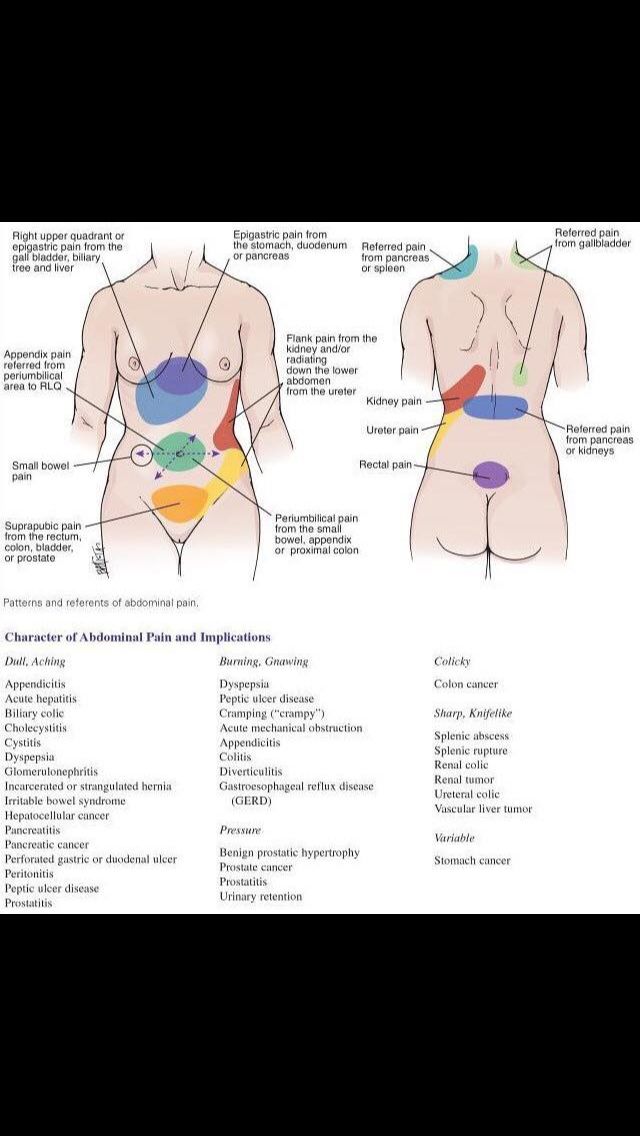 Placing the hernia truss over an already bulging hernia will only further compress these tissues and can increase symptoms like pressure and pain. Using a hernia truss helps most patients with pain management for the short term until they can schedule surgery.
Placing the hernia truss over an already bulging hernia will only further compress these tissues and can increase symptoms like pressure and pain. Using a hernia truss helps most patients with pain management for the short term until they can schedule surgery.
Relieving pain after hernia surgery
Type of surgery can definitely impact the amount of pain a person experiences after surgery and we tailor our approach with this in mind. Research on our outcomes after hernia repair demonstrates that most of our patients use only Tylenol and/or Motrin after inguinal hernia surgery. As a result, we have stopped routinely prescribing opioid pain medication after surgery, and instead rely on multimodal pain management techniques. In our practice, 91% of our patients manage their pain without opioid pain medications. We advise that our patients take both Tylenol (acetaminophen) and Motrin (ibuprofen) together every 6 hours. We often recommend icing the area for 20 minutes at a time, through a towel, so that ice does not come into contact with the skin directly.
In our practice, 91% of our patients manage their pain without opioid pain medications. We advise that our patients take both Tylenol (acetaminophen) and Motrin (ibuprofen) together every 6 hours. We often recommend icing the area for 20 minutes at a time, through a towel, so that ice does not come into contact with the skin directly.
We prescribe oxycodone for the patients who need it, those who have taken the tylenol and ibuprofen, used ice, and still have significant pain preventing sleeping at night or getting out of bed and walking around during the day. This is only the case in less than 1 in 10 patients recovering from our repairs.
In patients who have a higher degree of pain than normal, or patients who have a history of chronic pain or substance use disorder, we sometimes partner with our pain specialist to provide a more customized approach to pain management. Treating pain post-operatively is often a balance between making patients comfortable and exposing them to substances that have the potential for serious side effect and possible addiction. While we strive to make our patients as comfortable as possible with the generous use of local anesthesia during surgery, we advise our patients that having some discomfort or pain after surgery is preferred to some of the side effect of opioids. The Americas Hernia Society Quality Collaborative has been working hard to provide patients with information about ways to manage their post-op pain. Click here to download note-card of optimal ways to treat post-op pain and Click here to download a brochure about taking opioid after surgery
While we strive to make our patients as comfortable as possible with the generous use of local anesthesia during surgery, we advise our patients that having some discomfort or pain after surgery is preferred to some of the side effect of opioids. The Americas Hernia Society Quality Collaborative has been working hard to provide patients with information about ways to manage their post-op pain. Click here to download note-card of optimal ways to treat post-op pain and Click here to download a brochure about taking opioid after surgery
_______________________________________________________
We have also created some more detailed guidelines and a helpful guide for family or friends caring for a loved one recovering from hernia repair below. In order to be as best prepared as possible for your surgery and recovery, we encourage you to review these and print them prior to your hernia surgery.
About Dr. Reinhorn & Dr. Fullington
Dr. Michael Reinhorn is a specialist in inguinal hernia and umbilical hernia. Dr. Reinhorn started his practice as a full service general surgeon in 2001. In 2012 Dr. Reinhorn started to focus on the care of hernia and pilonidal patients. In 2020, Dr. Nora Fullington was recruited from her work as a general surgeon performing hundreds of laparoscopic hernia repairs to Boston Hernia. Together with their physician assistant team, they provide a focused practice designed to provide a superior clinical experience. The team performs approximately 700 hernia surgeries every year and offers a tailored approach for each patient from anesthesia type to consideration of mesh and no mesh repairs, laparoscopic and open surgery. We have published outcomes and continue to participate in hernia and surgery societies. Our research led to a reduction in opioid prescribing after hernia surgery. Currently, Dr. Reinhorn serves as the chair of the Opioid Reduction Task Force of the Americas Hernia Society Quality Collaborative.
Michael Reinhorn is a specialist in inguinal hernia and umbilical hernia. Dr. Reinhorn started his practice as a full service general surgeon in 2001. In 2012 Dr. Reinhorn started to focus on the care of hernia and pilonidal patients. In 2020, Dr. Nora Fullington was recruited from her work as a general surgeon performing hundreds of laparoscopic hernia repairs to Boston Hernia. Together with their physician assistant team, they provide a focused practice designed to provide a superior clinical experience. The team performs approximately 700 hernia surgeries every year and offers a tailored approach for each patient from anesthesia type to consideration of mesh and no mesh repairs, laparoscopic and open surgery. We have published outcomes and continue to participate in hernia and surgery societies. Our research led to a reduction in opioid prescribing after hernia surgery. Currently, Dr. Reinhorn serves as the chair of the Opioid Reduction Task Force of the Americas Hernia Society Quality Collaborative.
A patient’s testimonial about pain relief
The whole experience was great. Post-surgery pain was minimal, handled with advil only. The hernia repair has eliminated the pain and discomfort completely. Dr. Reinhorn and his team were as good as it gets.
11/25/15 – vitals
Back pain: a review of pain medications
This year, summer was expected, perhaps more than ever, to forget about distance learning and go to their dachas. But, if self-isolation at home somewhat limited us in movement, then the freedom provided, countryside vacations, trips and opportunities for outdoor activities can become causes for injuries and back pain.
In the article, we will consider the causes of back pain, the causes and symptoms, how to eliminate it and what means to use.
Back pain
The spine is the most important part of our body, on which, literally, life rests.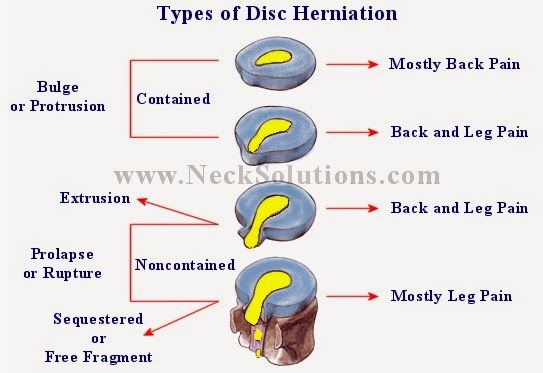 Hundreds of nerve fibers run inside and from it, which are connected with internal organs, muscles, ligaments and the brain. With “natural wear and tear” in combination with loads and injuries, this “detail” sooner or later begins to malfunction: the neck is jammed, the lower back is shot, the shoulder blades are numb, abrasion of the intervertebral discs, protrusions, hernia, pinching, osteochondrosis.
Hundreds of nerve fibers run inside and from it, which are connected with internal organs, muscles, ligaments and the brain. With “natural wear and tear” in combination with loads and injuries, this “detail” sooner or later begins to malfunction: the neck is jammed, the lower back is shot, the shoulder blades are numb, abrasion of the intervertebral discs, protrusions, hernia, pinching, osteochondrosis.
A sore back deprives of normal mobility, constrains movement, causes discomfort and even suffering. In this case, it is important to quickly provide assistance and take measures to eliminate unpleasant symptoms.
How to relieve back pain
Let’s talk about the most common causes and types of back pain in practice, as well as methods for relieving pain.
Intervertebral disc abrasion
Or thinning of the intervertebral discs – the cartilage that acts as a cushion between the bones of the spine and a shock absorber. Abrasion can have a natural course, that is, it can get worse with age, or it can be the result of diseases and pathologies:
- overweight
- sedentary work and sedentary lifestyle
- excessive and uneven load on the spinal column
- frequent inflammation of the muscles near the spinal column
- lack of fluid in the body, malnutrition, as a result of which the body does not receive enough vitamins and minerals
- postural disorders
- resolution processes in the joints of the lower extremities
- clubfoot, flat feet, hollow feet and other types of violation of the position of the foot when walking and playing sports
Abrasion of the intervertebral disc is a frequent companion and one of the causes of osteochondrosis.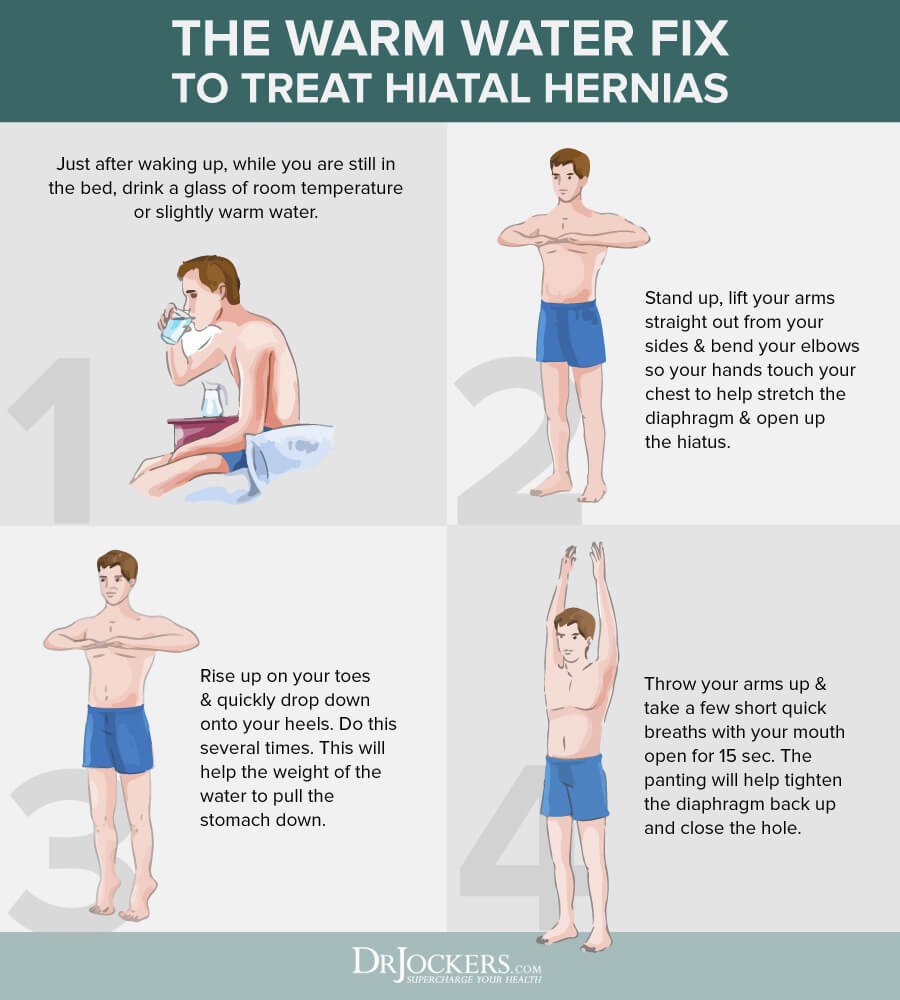 The nature of the pain can be very diverse: dull, aching pain resulting from compression of the nerve endings extending from the spinal nerves. Sometimes there is a desire, in the literal sense of the word, to shake the spine, like laundry after washing, stretch, straighten out, so as not to experience a pulling sensation, pressure, tingling in places of pathology.
The nature of the pain can be very diverse: dull, aching pain resulting from compression of the nerve endings extending from the spinal nerves. Sometimes there is a desire, in the literal sense of the word, to shake the spine, like laundry after washing, stretch, straighten out, so as not to experience a pulling sensation, pressure, tingling in places of pathology.
In this case, only a specialist should deal with treatment, but to alleviate discomfort, the systematic use of massage mats and applicators (Kuznetsov’s applicator), massage rollers and rollers, medicines are suitable:
Osteochondrosis
The beginning of osteochondrosis proceeds imperceptibly. Deformation, abrasion and dehydration of the intervertebral disc provokes the appearance of microcracks and loss of elasticity. All that a person can feel at the initial stage is discomfort between the shoulder blades and in the neck during prolonged immobility, a desire to stretch, backaches during intense loads, sudden movements.
These pains can often be mistaken for a heart attack or heart pain. The main differences between heart pain and neuralgia:
with neuralgia, there is a sharp pinching of the sternum with the inability to take a breath, cough, turns and any body movements become painful. Pain of a neuralgic nature increases with palpation in the area of its distribution. Neuralgia location zone loses sensitivity
In such situations, the condition can be alleviated by:
- Nise gel
- Ketonal gel
- Fastum gel
- Nurofen Express Gel
Protrusion
This is a complicated stage of osteochondrosis, in which the contour of the disc protrudes beyond the physiological boundaries while maintaining the integrity of the fibrous membrane. Protrusion is also a reversible state. If you relax the muscles of the lower back, it disappears in a few hours. For these purposes, manual therapy is suitable, all the same massage mats and applicators for the back, massage vacuum jars.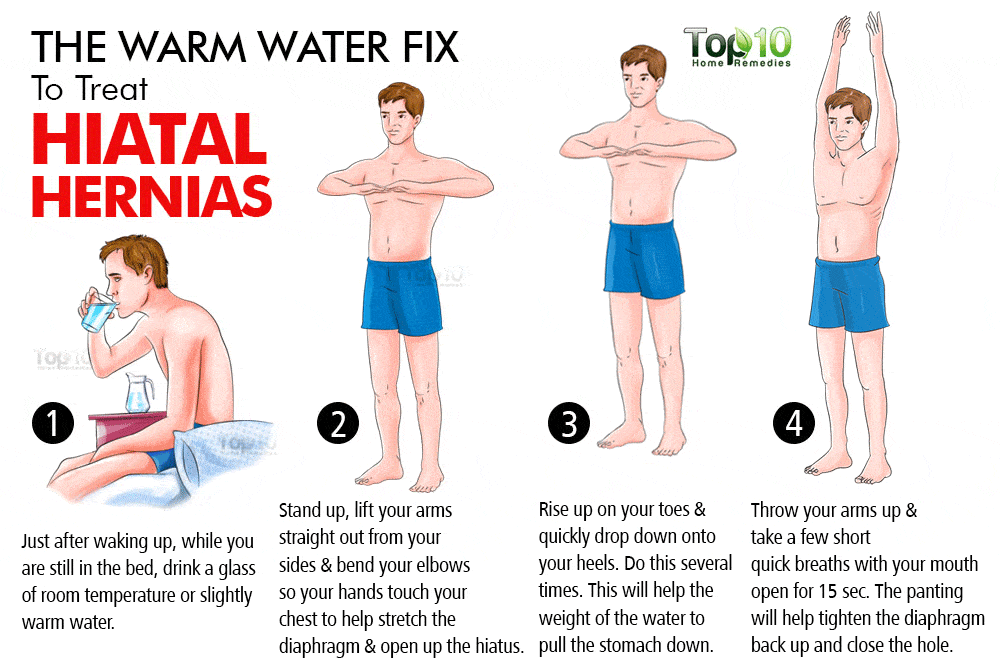 True, banks can only massage the muscles along the spine without capturing the spine itself. You can quickly relax your muscles with a hot 10-minute shower.
True, banks can only massage the muscles along the spine without capturing the spine itself. You can quickly relax your muscles with a hot 10-minute shower.
More often the pain is localized in the cervical region and lower back . This is explained by the fact that the largest number of nerve endings and two large arteries pass in the neck and in the lumbar spine. Because of what, frequent headaches (typical in principle for any pathologies associated with the spine) and dizziness (due to lack of blood circulation and oxygen in the brain) can torment.
Therefore, for the relief of precisely “vertebral” headaches, the following are suitable: tablets baralgin, nise, ibuprofen, moment, novigan, pentalgin. And:
- Teraliv 275
- Nalgezin
- Ketonal
- Ketonal duo
- Nurofen
- Artrozan
- Airtal
- Dexalgin
- Dexonal
- Diclofenac-Akrikhin
- Nimesil
- Meloxicam-Akrikhin
Protrusion is a serious call that is important to hear in time, because the next irreversible stage is a herniated disc .
Spinal hernia
Depending on the severity of the course of the disease, both observation and therapeutic treatment, as well as surgical intervention, may be required. However, in order not to bring the matter to the knife, the best thing to do is to contain the pathology as much as possible and achieve a stable remission.
It is worth remembering that a hernia of the spine does not belong to age and can affect a person even at a young age. The provoking factors of destruction and degeneration of the intervertebral disc and, as a result, hernia are not fully understood and not studied. Among the many causes, genetic and hereditary factors are essential and dominant. The rest is in the hands of the person himself. But even with an unfavorable genetic prognosis, a hernia is not a death sentence.
Pain in a hernia is a real suffering for those who are not lucky enough to have this diagnosis. It often manifests itself suddenly, very brightly and sharply, with paralysis of movement, sharp, dagger-like, hardly tolerable. One rugs and physical education is not enough here.
One rugs and physical education is not enough here.
It is possible to urgently relieve pain in case of a hernia of the spine
In case of severe pain, when a person becomes practically immobilized, intramuscular injections should be made using:
- Ketonal solution
- voltaren solution
- ketane solution
diclofenac solution
- artrozan
- movalis solution
Most often, prescription drugs and before using it is important to either consult a specialist or contact the emergency service.
Other causes of back pain
One way or another, destructive changes in the spine have one common beginning – osteochondrosis, which later develops into facet syndrome, sciatica, lumbago and other diseases.
Facet syndrome
In another way – arthrosis of the vertebral bones and joints. In which there are degenerative changes in the bone tissue, characteristic of any other type of arthrosis. The causes of spinal arthrosis are common: spondylitis – destruction of spinal tissues, which has an inflammatory and infectious nature, obesity and metabolic disorders in the body; rheumatoid type arthritis; inflammatory processes in tissues and joints, injuries.
The causes of spinal arthrosis are common: spondylitis – destruction of spinal tissues, which has an inflammatory and infectious nature, obesity and metabolic disorders in the body; rheumatoid type arthritis; inflammatory processes in tissues and joints, injuries.
A companion of the facet syndrome is constant inflammation in the zone of the disease location. But inflammation can gradually spread to nearby tissues. Therefore, it is important to accurately diagnose the pathology and start timely therapy.
Osteophytes
These are pathological growths on the bone tissue. Bone tissue grows along the edge of the bone, and this process can affect not only the spine. Osteophytes on the bones of the foot, for example, have a second name – heel spur.
Growing over time, osteophytes immobilize and cause pain, because they grow in the form of a characteristic spike.
Osteophytes can be caused by various metabolic disorders. Bone growths often occur as a result of high stress on the joint, which leads to the destruction of cartilage. Also, the cause may be a direct injury to the joint or spine.
Bone growths often occur as a result of high stress on the joint, which leads to the destruction of cartilage. Also, the cause may be a direct injury to the joint or spine.
To date, osteophytes are removed only surgically. Topical agents and injections can relieve the condition only temporarily.
Inflammation, myositis
Myalgia is a pathology of a muscular and tendon nature. Any inflammation, myalgia are not independent diseases, but are always a consequence.
P r and the treatment of myalgia try to combine symptomatic and etiological approaches. The easiest way to manage myalgia is with proper rest, analgesics, and relaxation treatments that bring quick relief. The inflammatory process and acute pains are stopped by non-steroidal anti-inflammatory drugs: nise, ketonal, nurofen . With an infectious origin, myalgia is prescribed antiviral or antibacterial drugs and drinking plenty of fluids to quickly remove microbial toxins from the body.
After the pain syndrome is eliminated, they proceed to physiotherapeutic procedures that activate local metabolism and accelerate regeneration. Recommended techniques include: microcurrents; IR therapy; magnetotherapy using the Almag apparatus; massotherapy.
The Almag device from this list is the most affordable home physiotherapy tool.
Read more about Almag and Almag Plus here…
Sciatica and lumbago
Radiculitis is a mechanical pinching of one or more spinal nerve roots, which occurs as a result of pathological processes occurring in the spine and musculoskeletal system. Such pathologies include, in addition to osteochondrosis, scoliosis, kyphosis, lordosis (types of curvature).
- Sometimes influenza, tuberculosis, rheumatism, syphilis, cerebrospinal meningitis, tick-borne encephalitis, tumors provoke the development of sciatica. But such root causes require medical supervision.
- Treatment of sciatica at home involves the use of locally dry heat or cold (with emergency first aid).
 As a local heat – the offer of locally irritating and locally warming ointments is suitable: salvisar , finalgon
As a local heat – the offer of locally irritating and locally warming ointments is suitable: salvisar , finalgon - Immobilization of the lower half of the body (using a tight circular bandage or lumbar brace) may also help relieve pain. Fixation belt options: ORTO lumbosacral brace, lumbar brace
During the period of acute pain, it is necessary to connect medications – such as, for example, Diclofenac-Akrikhin, Ketonal duo, Dexonal, Nimesil.
- Also in the treatment of sciatica, a sparing sedentary regime is important, but not more than 3-5 days.
Manual therapy, therapeutic exercises and physiotherapy, special exercise machines and massagers for home use must be connected only as pain symptoms decrease, not during the acute period of the disease.
Lumbago
Lumbago is often confused with sciatica because of very similar symptoms – pain appears, sudden, sharp, throbbing, which is localized in the lumbar spine. The patient “freezes” in the position in which he was overtaken by an attack, and takes a forced half-bent position. Severe pain can last from several minutes to several hours. A characteristic cause of acute backaches in the lumbar part of the back (lumbago) is physical activity, as a result, displacement of the vertebrae and intervertebral discs. And also, overheating of the lower back or hypothermia. One of the causes of recurrent lumbago may be an intervertebral hernia in an inoperable stage, which compresses the nerve roots.
The patient “freezes” in the position in which he was overtaken by an attack, and takes a forced half-bent position. Severe pain can last from several minutes to several hours. A characteristic cause of acute backaches in the lumbar part of the back (lumbago) is physical activity, as a result, displacement of the vertebrae and intervertebral discs. And also, overheating of the lower back or hypothermia. One of the causes of recurrent lumbago may be an intervertebral hernia in an inoperable stage, which compresses the nerve roots.
Prevention of back pain
It is difficult to call the prevention of back diseases prevention. Because this, ideally, is a lifestyle that by default implies self-care in every sense: physical education, nutrition, orthopedic insoles and foot correctors, annual vitamin and massage courses and a complete anti-stress regimen.
Be healthy!
How to get rid of the pain of a hernia of the spine
How to get rid of the pain of a hernia of the spine – pain pills for exacerbation of a hernia of the lumbar
Gimranov Rinat Fazylzhanovich
Neurologist, neurophysiologist, experience – 33 years;
Professor of Neurology, MD;
Clinic for Rehabilitation Neurology. About the author
About the author
Publication date: December 7, 2022
Sharp pain that occurs with every hand movement or step, an exhausting feeling of stiffness – these are signs of an inflamed vertebral hernia. If you do not take action in time, then unpleasant sensations will worsen life.
Article content:
- 1 Symptoms
- 2 Causes of exacerbation
- 3 First aid
- 4 Medicines
- 5 Physiotherapy
- 6 Treatment bathing exercises
- 7 massage
- 8 surgical treatment
- 9 How to prevent pain
- 10 What not to do in the presence of a hernia
- 11 References:
Symptoms
that it is her. Look out for additional symptoms.
Symptoms in the lumbar region:
- Sharp pain when trying to move in the lumbar region. Changes in the position of the body and attempts to lean in any direction become especially painful.

- Soreness radiates to the lower limbs. Depending on the size of the growth and its location, discomfort can be felt up to the lower leg.
- Feeling of goosebumps on the skin of the legs, slight numbness. Gradually it develops into limited mobility.
- Problems with the functioning of the urinary system.
- Changing the timing of the menstrual cycle and increased pain during menstruation.
Sometimes it is difficult for a person to stand and sit, rarely paralysis of the lower extremities can occur.
Hernia in the thoracic region:
- Sharp, drawing pain in the area of the ribs.
- Peeling of the skin in this area.
- Numbness and tingling in shoulders and arms.
Neck:
- Loss of neck mobility.

- Muscle tension.
- Headaches.
In a severe case, the arms stop raising, they weaken, they cannot perform work that depends on fine motor skills.
If symptoms and acute pain appear with a hernia of the lumbar or sacral spine, what to do, how and how to anesthetize the exacerbation, relieve pain in the lower back and back, which lumbar ointment to use, what treatment will be most effective for you, it is better to ask your doctor.
Causes of flare-ups
To find out which pain medications and pills can help with back pain in a herniated lumbar spine, it is important to understand what triggered the flare-up.
Etiology:
- Trauma.
- No movement.
- Vascular pathologies.
- Overweight.
- Carrying a child.
- Diseases that cause metabolic disorders.

- Regular physical labor, heavy lifting.
- The need to move quickly after a period of low mobility.
First aid
How to relieve pain in case of a hernia of the lumbar or any other part of the spine in the back, how to remove pain in the lower back – this is the only thought that worries a person. It is important to know the procedure so as not to harm a person, not to increase inflammation. [1]
Everyone who has such a diagnosis should know what to do and how to treat the lower back, how long it will take if the back hurts badly due to spinal hernia.
Proper first aid is important:
- Lie down on a hard or medium soft surface.
- Drink an available analgesic.
- Take a muscle relaxant. Muscle spasm will be relieved.
- Use cold dressings. If drugs are not currently available, cool the site of pain.
 However, remove the ice after 10 minutes. For people with liver disease, this technique is contraindicated.
However, remove the ice after 10 minutes. For people with liver disease, this technique is contraindicated.
If acute inflammation has already developed, there has been a pinching due to edema, the back hurts unbearably, then only a doctor should decide how to quickly relieve pain in the lower back, what to remove with a hernia of the lumbosacral spine.
Medications
In case of exacerbation of an intervertebral hernia in the lumbar region, the course of treatment, how to relieve pain, what to do to anesthetize, what painkillers to use, what drugs to remove an attack and inflammation in the back, depends on how much it already hurts intervertebral hernia. When measures are taken immediately when symptoms appear, then light remedies will help, and the attack will end in 2-3 days. If you decide to resort to the help of medicines after a few days, then the course of treatment is up to 2-3 weeks.
Specialists can choose a complex of medicines. Commonly used:
Commonly used:
- NSAIDs in tablet form, as well as injectable solution and ointments . Often you can use two types of the drug at once. They relieve pain and relieve inflammation. The most famous and affordable are Ketoprofen, Nimesil, Diclofenac. Aertal is another of the drugs that cope well with lower back pain on the right side due to spinal hernia. When applying, it is worth remembering the undesirable action. Do not take medications on your own, consider contraindications.
- Muscle relaxants – relaxing preparations . Their job is to relax the muscles. The most popular are Mydocalm, Tizalud. It is extremely important to choose the right dosage, as using too many tablets will negatively affect the functioning of the heart.
- Blockade is prescribed only after examination by a doctor . This is the introduction directly into the area of \u200b\u200bthe oppressed nerve root of a strong anesthetic.
 The injection should only be performed by a professional. This method is used for very severe pain and works for quite a long time.
The injection should only be performed by a professional. This method is used for very severe pain and works for quite a long time. - Chondroprotectors are used to prevent the appearance of new hernias. These drugs prevent the intervertebral disc from collapsing.
- Corticosteroids are strong pain relievers and anti-inflammatory drugs. They are taken in short courses strictly according to the doctor’s prescription.
If the pain in the lower back with a herniated lumbar spine in the back has become severe and acute, then it is up to the doctor to decide how to relieve it, what to treat and what to do, such pain may require treatment with strong prescription drugs.
Physiotherapy
Treatment with physiotherapy begins after the pain syndrome of spinal hernia is relieved. Some of the effective procedures that allow you to quickly remove inflammation and not experience pain in the future are dangerous to use during pain attacks, so you should not use them without the consent of your doctor.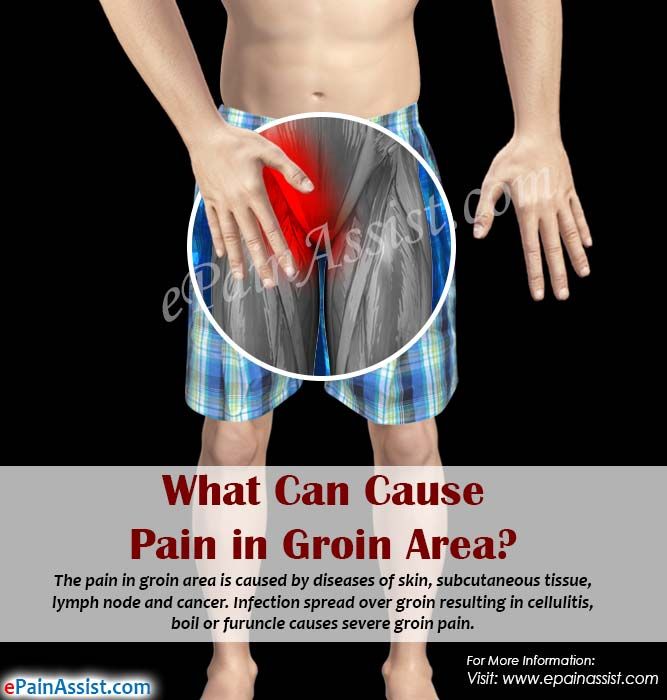
The most effective in the treatment of hernia inflammation are:
- Electrophoresis . With the help of electrical impulses, the medicine is delivered directly to the place of pain localization, acting much more effectively and with less likelihood of side effects.
- Magnetotherapy perfectly fights swelling and inflammation. Magnetic fields, constant or variable, affect the sore spot, significantly speeding up metabolism, improving blood flow, which will saturate the back with oxygen, substances and vitamins.
- Laser therapy . Exposure to a beam of laser beams allows you to warm it up well, which accelerates tissue regeneration. Because of this, the movement of blood is accelerated, which allows you to reduce inflammation.
- UHF . The whole body is affected by high-frequency magnetic waves.
 This allows you to significantly accelerate tissue regeneration, improve blood circulation and nerve conduction.
This allows you to significantly accelerate tissue regeneration, improve blood circulation and nerve conduction.
A full course of physiotherapy usually includes 10-15 sessions, during which the patient’s condition improves, and the chance of an early recurrence of an attack is reduced to almost zero, provided that the patient follows the advice.
Therapeutic gymnastics
A universal remedy that is prescribed for almost everyone who has faced the problem of hernia in the back – a course of exercise therapy.
Exercises are started only after the acute phase of the attack has completely passed. Performing most exercise therapy movements during a period of acute pain will only intensify them.
Exercise therapy is an excellent preventive tool available to everyone. However, to achieve the desired effect, regular exercises are needed.
At the first training sessions, the trainer must show how to perform individual complexes correctly. For the first time, each exercise of the complex is performed 3-4 times. In the future, the number may increase to 10, but it is impossible to go beyond this line of activity, since too much load can provoke the onset of a new attack.
For the first time, each exercise of the complex is performed 3-4 times. In the future, the number may increase to 10, but it is impossible to go beyond this line of activity, since too much load can provoke the onset of a new attack.
Massage
There are special techniques that allow you to increase the distance between the vertebrae and start the regeneration process, significantly speeding up the recovery and speed of recovery of damaged nerve endings. Thanks to the hands of a specialist, the muscles relax, spasms disappear, and muscle tone improves.
Massage should only be performed by a specialist, because with an inept impact on the muscles and spine, you can not only not help, but also seriously harm. With special attention, it is necessary to approach the choice of a massage therapist if your hernia is sequestered, that is, it has moved from its original place. Also, before prescribing the procedure, the attending physician checks if the patient has any diseases that are contraindications for massages.
Surgical treatment
Anesthesia, even with strong drugs, for intervertebral hernia of the lumbar spine and pain in the leg does not always have the desired effect. In some cases, conservative medicine is powerless in trying to save the patient from suffering. In such cases, it is necessary to resort to surgical removal of the problematic neoplasm. [2]
The operation is prescribed in hopeless situations, such as:
- No result.
- Pain cannot be completely removed within 2-3 months. Such a long course of drug treatment is dangerous.
- A person gradually loses the mobility of the limbs, there is a danger of paralysis.
- Hernia too large.
- Violation of the internal organs.
There are several types of surgery depending on the complexity of the case. The duration of the rehabilitation period depends on what kind of operation you will undergo. With minimal intervention, it will end in a few days, and with complete removal, recovery can take up to 2 months. [3]
With minimal intervention, it will end in a few days, and with complete removal, recovery can take up to 2 months. [3]
How to prevent pain
Thinking about the question of how to permanently get rid of pain in the case of a hernia of the lumbar spine in the back, improve the lower back, it is worth remembering that prevention is easier than cure. Once recovered from an attack, it is enough just to follow preventive methods so as not to repeat an unpleasant and painful experience.
The most effective ways to prevent pain:
- Give up physical inactivity . Be sure to walk daily, exercise several times a week, giving priority to swimming. Strengthen your back muscles.
- Keep a close eye on your back . Beware of slouching not only when walking somewhere, but also when sitting at a table.
- Do not gain weight .
- Adjust your diet to eliminate junk food , but get all the necessary vitamins and minerals, pay special attention to B vitamins.
 If necessary, take special vitamin and mineral complexes.
If necessary, take special vitamin and mineral complexes. - Drink the right amount of water, avoid dehydration . In this case, preference should be given to clean water.
- Get the right place to sleep . Buy an orthopedic mattress, a pillow that suits your height. This will allow you to have the most comfortable rest at night. Avoid too soft surfaces.
- Buy orthopedic corset and wear it when playing sports and when you have to carry something heavy, strain your back.
- Pay special attention to back safety , choose shoes with non-slip soles.
In order not to look for the most effective, best, most powerful painkiller for spinal hernia and an attack of vertebral back pain, it is enough to follow the restrictions imposed by the doctor and follow the advice of professionals, changing your life. By maintaining health with preventive measures, you not only avoid attacks of pain, but also prevent the further development of degenerative diseases.
What not to do if you have a hernia
If you have already been diagnosed with a hernia, then you need to reconsider your habitual behavior for life, eliminating dangerous activities that can provoke a new attack of the disease. A list of what can not be done so that the hernia of the spine does not worsen is given by the doctor after the course of treatment. [4]
However, there are universal restrictions that apply to everyone with a similar diagnosis:
- Move sharply . It is necessary to exclude any activity that implies the possibility of sudden or regular rapid movements. Including abandon sports, the main of which is a quick response to the opponent’s actions.
- Perform exercises with dumbbells, barbells, spinal twists . An additional load on an already deformed spinal column will instantly lead to an attack of pain. In addition, this can provoke the appearance of another hernia.

- Lift any weight . The restriction applies not only to the gym, but also to ordinary life. It is worth giving up the habit of carrying heavy bags or moving massive objects forever.
- Pull-ups and push-ups . Forcing the body to be in an unusual position, increasing the load on the back muscles, you put too much pressure on the spine, which can lead to an exacerbation of the disease.
- Lean forward with legs straight . This position is not physiological and creates additional tension in the muscles of the back and spine.
- Visit saunas, steam baths, take a hot bath. Excessive overheating is extremely harmful in the development of hernias. High temperatures can provoke not only an attack of pain, but also contribute to inflammation of nearby tissues.
References:
Was this article helpful?
You can subscribe to our newsletter and learn a lot of interesting things about the treatment of the disease, scientific achievements and innovative solutions:
Your e-mail
I agree with the privacy policy and the processing of personal data
Please leave this field empty.

 Additionally, eating smaller meals and avoiding foods that may cause constipation can also provide hernia relief.
Additionally, eating smaller meals and avoiding foods that may cause constipation can also provide hernia relief. As a local heat – the offer of locally irritating and locally warming ointments is suitable: salvisar , finalgon
As a local heat – the offer of locally irritating and locally warming ointments is suitable: salvisar , finalgon 


 However, remove the ice after 10 minutes. For people with liver disease, this technique is contraindicated.
However, remove the ice after 10 minutes. For people with liver disease, this technique is contraindicated. The injection should only be performed by a professional. This method is used for very severe pain and works for quite a long time.
The injection should only be performed by a professional. This method is used for very severe pain and works for quite a long time.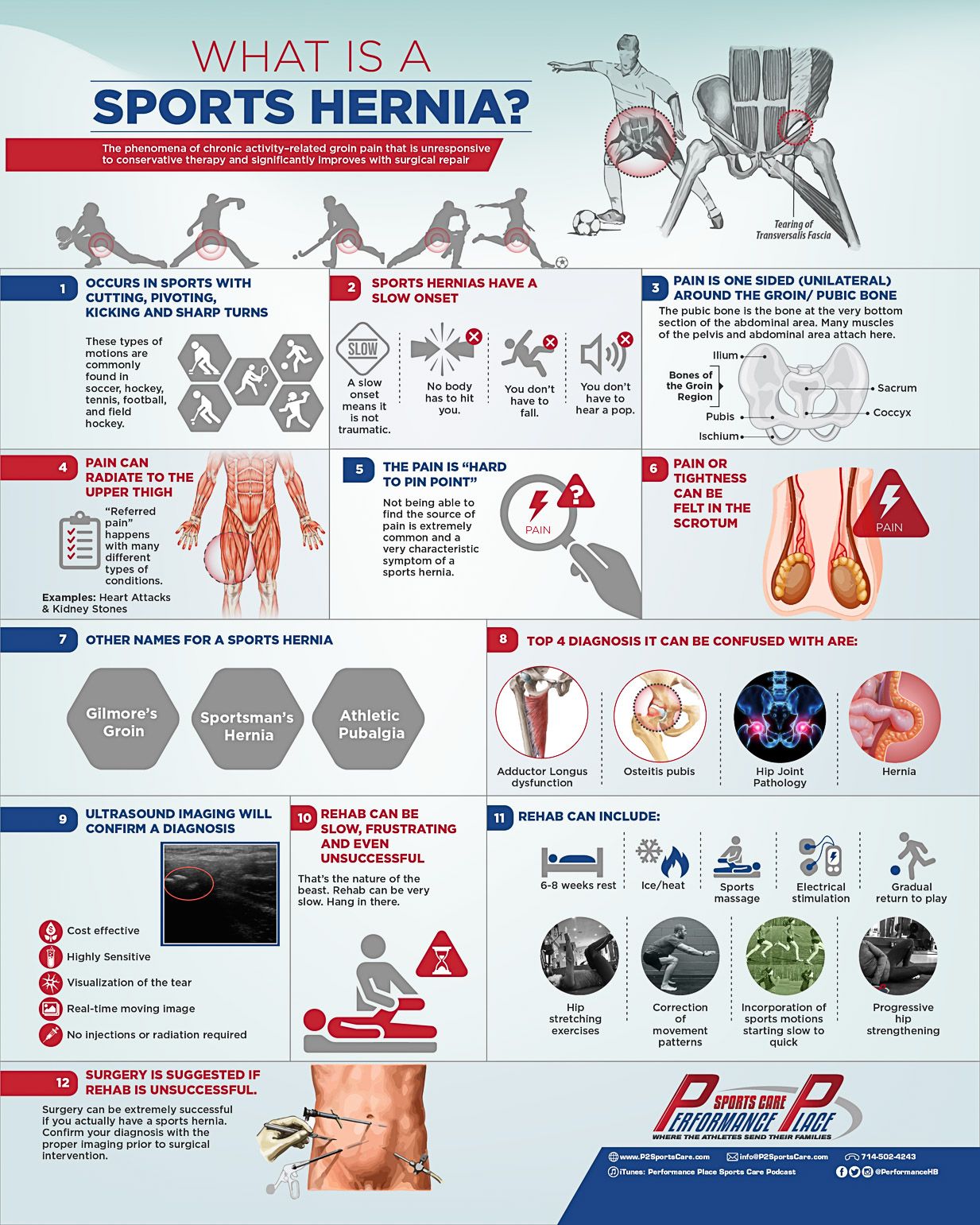 This allows you to significantly accelerate tissue regeneration, improve blood circulation and nerve conduction.
This allows you to significantly accelerate tissue regeneration, improve blood circulation and nerve conduction. If necessary, take special vitamin and mineral complexes.
If necessary, take special vitamin and mineral complexes.